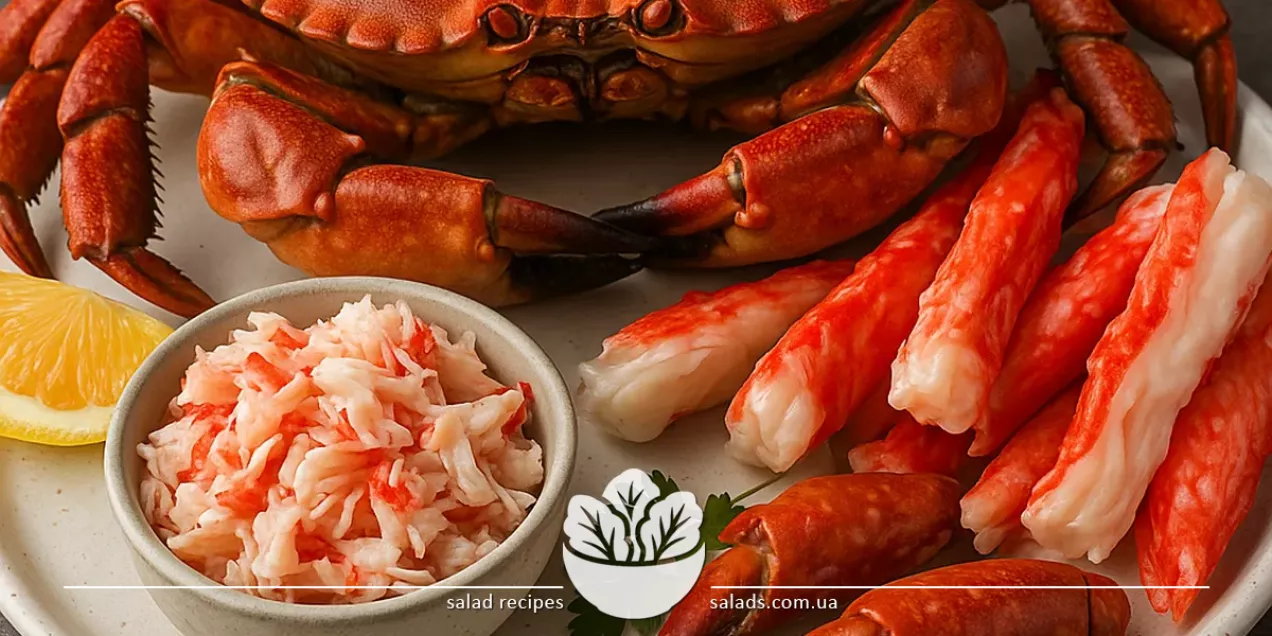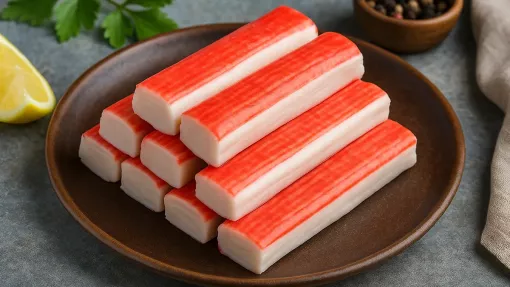Crabs

Crabs are gourmet seafood appreciated for their white meat with a mild, slightly sweet taste and soft texture. They are used in cuisines around the world, from classic Asian soups to European salads and modern restaurant dishes. Within the seafood category, crabs hold a special place thanks to their flavor, nutritional value, and versatility. Both whole crabs and cleaned meat from claws and legs are used in culinary applications – in cold appetizers, hot dishes, pasta, risotto, and sauces.
Different Types of Crabs
Crab Varieties: From King Crab to Blue Crab
Crabs come in a wide variety of species, each with distinct flavor profiles, sizes, and culinary uses. The most well-known is the Kamchatka king crab – a true delicacy with large claws and a generous amount of tender meat. It is often used in fine dining restaurants and served whole or as fillets baked with sauces or added to salads. Snow crab has a more delicate but very refined texture. It is commonly sold pre-cooked and cleaned, making it ideal for salads, sushi, or appetizers. Snow crab meat is known for its fibrous texture and sweet flavor, requiring minimal seasoning. It pairs well with light vegetables such as cucumbers, avocado, or leafy greens.
The blue crab, found in tropical and subtropical waters, has soft, flavorful meat, though it is more difficult to harvest due to its smaller size. It is often boiled or fried whole and added to Asian soups and stews. In Southeast Asian cuisines, it is commonly paired with ginger, garlic, and chili. There is also stone crab meat with a more intense aroma and mangrove crab, which is widely used in Indian cuisine. These varieties differ not only in appearance but also in saltiness, aroma, and cooking methods. For home use, crab meat is most often purchased already cleaned, either chilled or frozen. It is perfect for making salads, sandwiches, pasta, or soups with corn, cream, or lemon juice.
Nutritional Value and Health Benefits of Crab Meat
Crab meat is a valuable source of high-quality protein that is easily digestible and contains all essential amino acids. On average, 100 grams of crab meat provides 16-20 grams of protein, only 80-100 kcal, and virtually no fat, making it an ideal product for low-calorie and athletic diets. Due to its low carbohydrate content and high nutrient density, crab is recommended in calorie-restricted menus. Crab meat is rich in essential trace elements such as zinc, selenium, copper, phosphorus, potassium, and calcium. These nutrients play a key role in supporting the immune system, thyroid function, nervous system performance, and bone health. Selenium, in particular, is a powerful antioxidant that protects cells from oxidative stress.
Crab meat also contains vitamin B12, which is essential for red blood cell formation and energy metabolism. Other B vitamins are also present, along with small amounts of vitamins A, E, and D. Regular and moderate consumption of crab supports a healthy metabolism and strengthens the cardiovascular system. Unlike some other seafood, crabs are low in mercury and harmful contaminants – especially those harvested in open ocean waters. For this reason, crab meat is considered safe even for children and those with sensitive digestion. To retain its nutritional value, crab is best boiled or steamed. Avoid over-frying or combining it with heavy sauces. It pairs well with onions, garlic, creamy notes, mild herbs, and citrus juices.
Culinary Uses of Crab Meat
Crab meat is a versatile ingredient that harmonizes well with both light and rich components. In cold dishes, it is often used in salads – from classic crab salads with rice, eggs, mayonnaise, and corn to modern versions with avocado, salad greens, citrus fruits, or yogurt-based dressings. In hot dishes, crab meat is added to pasta, risotto, soups, or casseroles. It pairs wonderfully with cream, white wine, soft cheeses, and herbs. One of the most popular preparations is crab cakes, which are either baked in breadcrumbs or served with tartar sauce. Crab is also used as a filling for crepes or in puff pastry appetizers for an elegant touch.
Crabs are ideal for Asian soups such as tom yum, miso soup, or ramen, where they enrich the broth with their aroma and add a refined note. They can also be grilled or baked in shells with sauces made from butter, lemon juice, and herbs. In street food, crab meat is used in sandwiches, burgers, crab rolls, and mini pies. It pairs easily with cucumbers, herbs, tomatoes, soft buns, or crackers. Its tender texture makes it perfect for finger food or as a filling. Another direction is sushi, rolls, and bowls. Crab combines well with rice, avocado, nori, and soy sauce. It is often mixed with light sauces or served as tartare in spoons or tartlets.
How to Choose Crabs and Store Crab Meat
When selecting crabs, consider both their appearance and processing method. The most prized are fresh, live crabs, although they are not always available. Most commonly, cooked frozen crabs or cleaned meat in vacuum packaging – either chilled or pasteurized – are sold. A fresh crab should have a firm shell with no cracks or slime. The eyes should be shiny, and the limbs intact. If purchasing cleaned meat, check the color and aroma: it should be white or slightly creamy, with a pleasant sea scent and no sourness or bitterness.
Vacuum-packed crab meat should indicate the production date and expiration date. It is important to follow storage guidelines – usually at a temperature between 0 and +4 °C. After opening, the product should be consumed within 24-36 hours. For frozen meat, defrost it in the refrigerator rather than the microwave to preserve its texture. Frozen crabs should not be refrozen after thawing. If the crab was frozen raw, it must be cooked before consumption. Cooked frozen crabs are ready to eat after defrosting – they can be served with lemon or added to dishes – just like pork in seafood recipes. Store leftovers of prepared crab dishes in airtight containers. Shelf life in the refrigerator is no more than 2 days. If the meat was cooked with sauces or vegetables, it should be eaten even sooner.
Pairing Crab Meat with Other Ingredients
Tender, slightly sweet crab meat pairs beautifully with a wide range of ingredients, both in gourmet and everyday cooking. It works well with light vegetables, herbs, dairy-based sauces, fruity notes, and even spicy seasonings. In salads, crab goes well with boiled onions, eggs, corn, fresh cucumbers, avocado, and green peas. In hot dishes, crab meat complements creamy and cheesy sauces, adding elegance to pasta, risotto, and soups. For example, crab in a creamy sauce with tagliatelle or a crab bisque with shallots and white wine are restaurant classics.
A unique but successful pairing is with shrimp, as both types of seafood enhance each other in dishes with Asian sauces, noodles, or curries. Crab also works wonderfully with vegetable purees – such as pumpkin, broccoli, or potato – making it a perfect ingredient for dietary or children’s meals. In fusion recipes, crab plays a key role in tartlets, crepes, puff pastry snacks, stuffed eggs, sushi, or tempura. It is also used as a filling in rolls, bowls, or mini sandwiches with creative sauces. Crab meat is a versatile delicacy that adds sophistication, depth of flavor, and a restaurant-worthy appearance to home cooking. Choosing fresh or high-quality cleaned crab allows it to be easily integrated into a modern menu, balancing culinary aesthetics with nutritional benefits.
